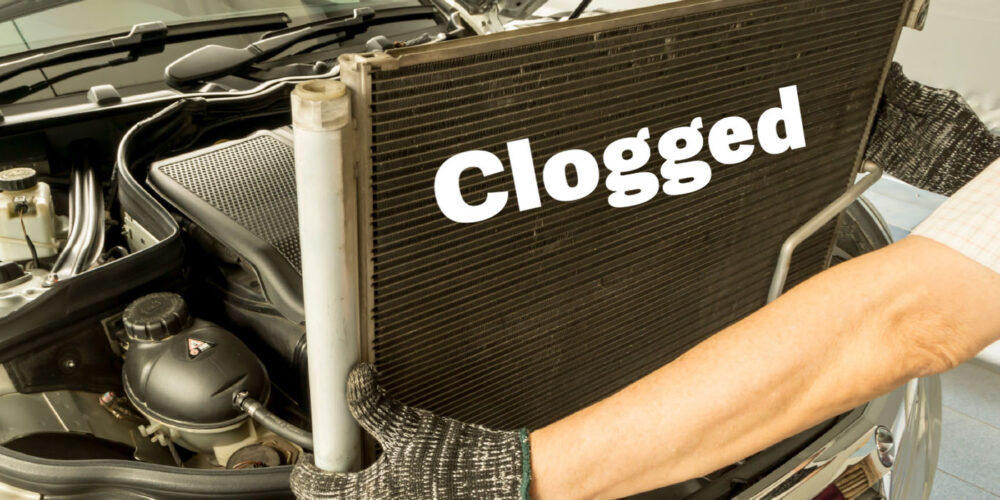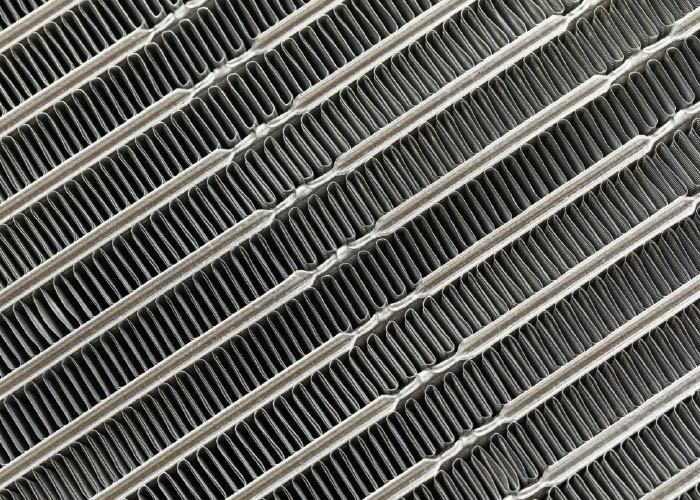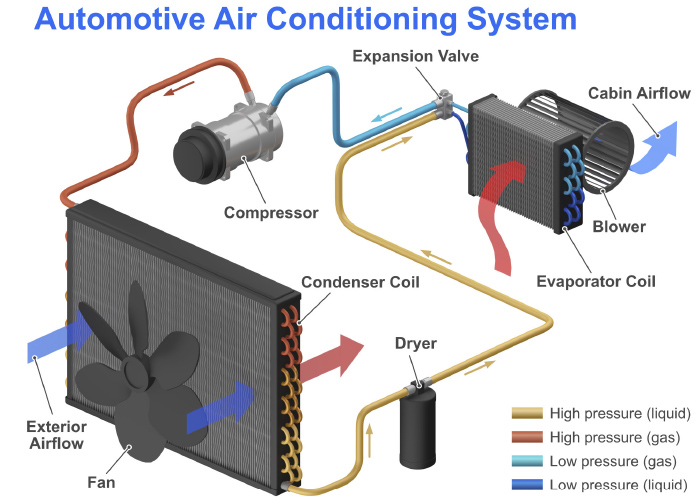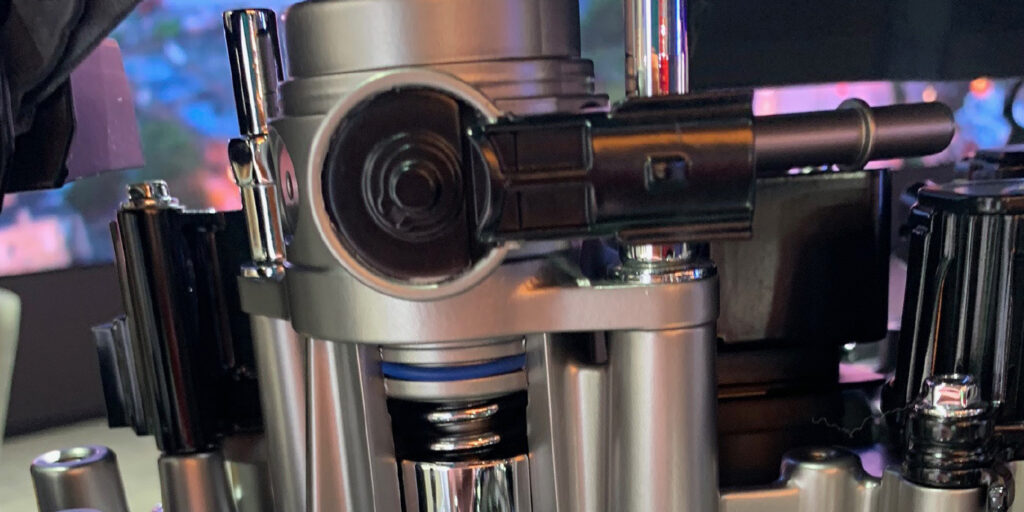HVAC systems are designed to absorb and transfer heat. The evaporator is designed to pull heat out of the cabin or air entering the cabin. The condenser is designed to transfer heat to the outside air. It does this by utilizing the surface area of the condenser and evaporator. Also, the phase transition of the refrigerant from a gas to a liquid cools the components.
When a compressor fails, the question for most technicians is whether to flush the condenser or replace it. The answer depends on the type of condenser it is. For tube and fin condensers or serpentine types, the choice is not difficult; the internal tube diameter is wide enough to be able to flush material through it to ensure the inside is clean and free of contaminants.
R-134a systems use a parallel-flow condenser because it’s a more efficient condenser design for this type of refrigerant. Parallel-flow condensers don’t have a large hollow tube that the refrigerant flows through, but a series of very small tubes close together in a row with the internal diameter about the size of a pin head. This helps to improve the surface area of the condenser and increase its cooling capacity.
Its multi-channel construction allows the refrigerant to make multiple passes through the condenser, which provides maximum heat transfer. Also, the smaller tubes and wide surface area allow the maximum amount of refrigerant to encounter air flowing through the condenser fins.
Unfortunately, the characteristics that make the parallel-flow condenser so efficient are also among its major drawbacks.
The tubes that efficiently transfer heat are so small that they trap any contamination in the system that tries to pass through them. What that means for your customers is that flushing the A/C system won’t remove the contamination from the condenser. These particles will create a restriction in the condenser and make the high-side pressures go up, forcing the compressor to work harder and possibly fail. It’s also possible that the contamination in the condenser can work itself free and end up at the compressor, where it also will cause a failure.
Nonetheless, the parallel-flow condenser is a highly effective heat exchanger that divides the unit into sections or “passes” which creates a more efficient process for the refrigerant to change state from gas to liquid.
This is done by making the refrigerant change direction by 180° at the end on the siderails by placing a plug inside the rail at intervals, forcing the refrigerant to change directions. The more plugs, the more times the refrigerant changes direction. In most condensers, the refrigerant makes three to four “passes” through the condenser.
When a compressor fails, it introduces contaminants into the system. One of the easiest ways to spot this is to remove the orifice tube that usually reveals metal deposits or sludge from a faulty compressor. The metal and sludge get deposited throughout the system and will collect at places in the system with restrictions, like the orifice tube and, on later-model vehicles, the parallel flow condensers.
While flushing the system can help to remove debris from part of the system, items with small openings, like the parallel flow condenser, are going to collect the debris. Flushing them will only push the contaminants farther into the condenser and will collect at the plugs in the side rails, reducing the amount of rows available to cool the refrigerant and slowing the flow of the refrigerant; this leads to high head pressures. Combine that with a high-efficiency compressor, like a scroll, and not only will the replacement compressor fail, but it may do so catastrophically.
When confronted with a compressor failure on a vehicle fitted with a parallel-flow condenser, experts recommend that the technician replace the accumulator, orifice tube or expansion device and condenser. It is also recommended that all other components be flushed to ensure they are free of contaminants that could harm the new compressor.
Here’s the bottom line: If your customer’s A/C system has a parallel-flow condenser, and there’s a situation where you need to flush the system, it’s strongly recommended that you replace the condenser. That’s because a parallel-flow condenser cannot be flushed. Since flushing the system is always recommended when replacing a failed compressor, if your customer needs a new compressor, odds are they’ll need a new condenser, too. Be aware, sometimes the problem isn’t what it appears to be.
















